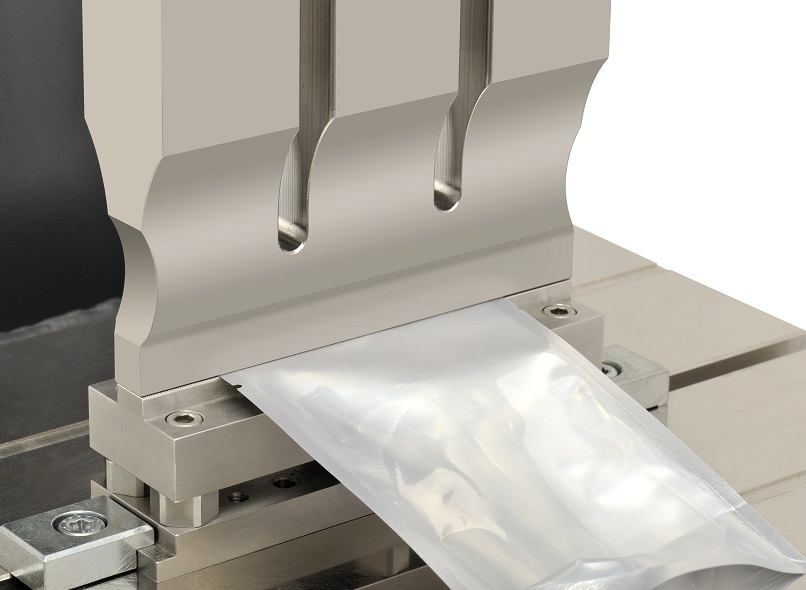Choosing Between Ultrasonic Sealing vs Heat Sealing: A Comprehensive Guide

When it comes to sealing methods, there are various options available, but two commonly used techniques are ultrasonic sealing and heat sealing. These methods are widely employed in industries such as packaging, medical devices, electronics, automotive, and more. In this comprehensive guide, we will delve into the intricacies of ultrasonic sealing and heat sealing, comparing their advantages, disadvantages, and applications to help you make an informed decision for your specific sealing needs.
Ultrasonic Sealing
Ultrasonic sealing is a process that utilizes high-frequency vibrations to create heat, which then melts the thermoplastic materials and forms a strong bond. These vibrations are generated by an ultrasonic horn that is in direct contact with the films to be sealed. Ultrasonic sealing is known for its ability to create hermetic seals without the need for additional adhesives or solvents. This method offers several advantages that make it a popular choice in the industry.
Advantages of Ultrasonic Sealing
- Versatility: Ultrasonic sealing can be used with a wide range of films, including plastics such as polyethylene, polypropylene, PVC, and PET. It is also compatible with laminated films, allowing for the sealing of multiple layers. This versatility makes ultrasonic sealing suitable for diverse industries, including food and beverage, pharmaceuticals, electronics, and automotive.
- Speed and Efficiency: Ultrasonic sealing is known for its exceptional speed and efficiency, enabling high production rates. With its ability to seal films quickly and reliably, manufacturers can streamline their production processes and meet demanding market needs. This can result in cost savings and improved productivity.
- Hermetic Seals: The heat generated during ultrasonic sealing creates a strong and hermetic seal. This exceptional seal provides excellent barrier properties, preventing leakage and ensuring product integrity. The hermetic nature of ultrasonic seals also helps protect the packaged contents from external factors such as moisture, oxygen, and contaminants. This is particularly beneficial for products that require a long shelf life or need to maintain their freshness.
- Elimination of Additional Materials: Unlike adhesive bonding, ultrasonic sealing does not require any additional materials such as glue or solvents. This simplifies the sealing process, saves costs, and eliminates the need for additional inventory management. Manufacturers can enjoy a more streamlined and environmentally friendly packaging process. Moreover, the absence of adhesives eliminates the risk of contamination or migration of chemicals into the packaged products.
- Clean and Environmentally Friendly: Ultrasonic sealing is a clean process that does not produce any smoke, fumes, or residue. This eliminates the need for exhaust systems or ventilation and creates a safer working environment. Moreover, the absence of chemical adhesives makes it an environmentally friendly choice, reducing the carbon footprint associated with packaging processes. By opting for ultrasonic sealing, manufacturers can contribute to a more sustainable future.
Limitations of Ultrasonic Sealing
While ultrasonic sealing offers many advantages, it also has some limitations that should be considered:
- Higher Initial Equipment Cost: Ultrasonic sealing equipment can have a higher initial cost compared to heat sealing equipment. This upfront investment may need to be considered when evaluating the suitability of ultrasonic sealing for a particular application.
- Limited Applicability for Certain Materials and Product Designs: While ultrasonic sealing is versatile, there are certain materials and product designs that may not be suitable for this method. It is important to consider the compatibility of the materials with ultrasonic sealing before making a decision.
- Longer Sealing Cycle Time: Ultrasonic sealing may require a longer sealing cycle compared to heat sealing, which can impact the overall production speed. This should be taken into account when speed is a critical factor for a specific application.
Heat Sealing
Heat sealing, also known as thermal sealing, utilizes heat to melt the thermoplastic materials and create a bond. This method involves applying heat and pressure to the sealing area, causing the material to melt and fuse together. Heat sealing is widely used in various industries and offers its own set of advantages and limitations.
Advantages of Heat Sealing
- Cost-Effective and Widely Available Equipment: Heat sealing equipment is generally more affordable and readily available compared to ultrasonic sealing equipment. This makes it a practical choice for many industries, especially those with budget constraints.
- Faster Sealing Cycle: Heat sealing can achieve faster sealing times compared to ultrasonic sealing. This can be advantageous for high-volume production where speed is a critical factor.
- Suitable for a Wide Range of Materials and Product Designs: Heat sealing can be used with various materials, including plastics, fabrics, and foils. It is suitable for sealing irregular shapes and larger areas, making it a versatile option for different product designs.
- Can Create Strong and Reliable Seals: When properly executed, heat sealing produces strong and durable seals that maintain product integrity. This is essential for applications that require secure packaging and protection of the contents.
Limitations of Heat Sealing
While heat sealing has its advantages, there are also limitations to consider:
- Additional Adhesives or Sealants: Depending on the materials and application, heat sealing may require the use of additional adhesives or sealants to ensure a secure bond. This can add complexity to the sealing process and may increase costs.
- Generation of Excess Waste: Heat sealing can result in excess material outside the sealed area, which may lead to more waste compared to ultrasonic sealing. Proper waste management practices need to be implemented to mitigate this issue.
- Limited Suitability for Delicate or Heat-Sensitive Materials: Some materials, particularly those that are delicate or heat-sensitive, may not be compatible with heat sealing. Careful consideration of material properties is necessary to avoid damage or degradation during the sealing process.
Choosing the Right Method for Your Application
When choosing between ultrasonic sealing and heat sealing, it is important to consider various factors to determine the most suitable method for your specific application. Here are some key considerations:
- Material Compatibility: Determine if the sealing method is compatible with the materials you are working with. Ultrasonic sealing is more versatile for sealing a wider range of materials, including plastics and laminated films.
- Seal Strength and Reliability: Evaluate the strength and reliability of the seals produced by each method. Ultrasonic sealing typically provides a stronger and more consistent bond, which may be important for applications requiring hermetic seals.
- Equipment Cost and Availability: Consider the initial equipment cost and availability of each method. Heat sealing equipment is generally more cost-effective and widely available, making it a practical choice for many industries.
- Production Speed: Assess the required production speed for your application. Heat sealing generally has a faster sealing cycle compared to ultrasonic sealing, which can be advantageous for high-volume production.
- Product Design and Application: Take into account the design and application requirements of your product. Some designs or materials may be better suited for one method over the other, considering factors such as shape, size, and heat sensitivity.
By carefully considering these factors, you can make an informed decision on whether to choose ultrasonic sealing or heat sealing for your specific application. Remember to weigh the pros and cons of each method and prioritize the factors that are most important for your project.
In conclusion, both ultrasonic sealing and heat sealing have their advantages and limitations. By understanding the differences between these sealing methods and considering your specific needs, you can choose the method that best suits your project requirements. Whether you prioritize factors such as seal strength, versatility, equipment cost, or production speed, careful consideration will lead to an optimal choice for your sealing applications.





